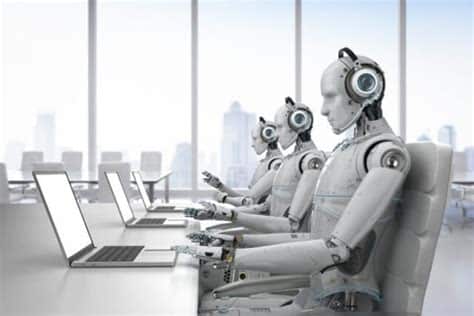Robotic Process Automation (RPA) is a technology that uses software robots, also known as “bots,” to automate repetitive, rule-based tasks that are typically performed by humans. RPA bots can be programmed to mimic human actions such as clicking buttons, typing, copying and pasting, and navigating between applications and systems.
RPA is often used to streamline and automate business processes in industries such as finance, healthcare, and insurance. For example, an RPA bot can be programmed to extract data from an email, enter it into a spreadsheet, and then generate a report based on that data. This can save employees time and reduce errors that can occur when tasks are performed manually.
RPA can be implemented in a variety of ways, from standalone bots that perform specific tasks to more complex systems that integrate with other technologies such as artificial intelligence and machine learning. It is important to note that while RPA can automate many tasks, it is not a replacement for human workers and should be used in conjunction with a human workforce.
Here are some additional details about Robotic Process Automation (RPA):
- Benefits of RPA: RPA can bring many benefits to organizations, such as increased efficiency, improved accuracy, reduced costs, and faster processing times. It can also free up employees to focus on more high-value tasks, which can lead to improved productivity and job satisfaction.
- Applications of RPA: RPA can be used in a variety of industries and applications, such as finance and accounting, HR, customer service, healthcare, supply chain management, and more. Some common use cases include invoice processing, data entry, customer onboarding, and order fulfillment.
- Implementation of RPA: Implementing RPA involves identifying the processes that can be automated, selecting the appropriate RPA tools, designing the workflows and business rules, and testing and deploying the bots. It is important to have a clear understanding of the goals and objectives of the RPA initiative and to involve key stakeholders throughout the process.
- Challenges of RPA: While RPA can bring many benefits, there are also some challenges to consider. These include the need for ongoing maintenance and updates to the bots, the potential for security risks if bots have access to sensitive data, and the potential for resistance from employees who may view RPA as a threat to their jobs.
- Future of RPA: RPA is a rapidly evolving technology, and there are many new developments and trends emerging in the field. Some of these include the integration of RPA with other emerging technologies such as artificial intelligence and machine learning, the expansion of RPA into new industries and applications, and the development of more user-friendly and accessible RPA tools for non-technical users.
- Integration with AI and Machine Learning: RPA can be integrated with other emerging technologies such as artificial intelligence and machine learning to create more advanced automation solutions. This can enable bots to perform more complex tasks, such as natural language processing, sentiment analysis, and decision-making.
- Cognitive Automation: Cognitive automation refers to the use of RPA in combination with cognitive technologies such as natural language processing and machine learning to automate tasks that require higher-level thinking and decision-making. This can enable bots to perform tasks that were previously thought to be too complex or time-consuming for automation.
- Hyperautomation: Hyperautomation is an approach to automation that combines RPA with other advanced technologies such as AI, machine learning, and process mining to automate end-to-end business processes. This can enable organizations to achieve greater efficiencies, reduce costs, and improve customer experiences.
- Citizen Developers: Citizen developers are non-technical users who are trained to create and deploy RPA bots using low-code or no-code platforms. This can enable organizations to scale their RPA initiatives more quickly and efficiently, and can also empower employees to take ownership of automation initiatives.
- RPA as a Service: RPA as a Service (RPAaaS) is a cloud-based service that provides organizations with access to RPA bots and tools without the need for on-premises infrastructure or technical expertise. This can enable organizations to implement RPA more quickly and easily, and can also provide a more cost-effective and scalable solution.
- Ethics and Governance: As RPA becomes more widespread, there is a growing need for ethics and governance frameworks to ensure that automation is deployed responsibly and ethically. This includes considerations such as data privacy, security, and the potential impact of automation on employees and society as a whole.







